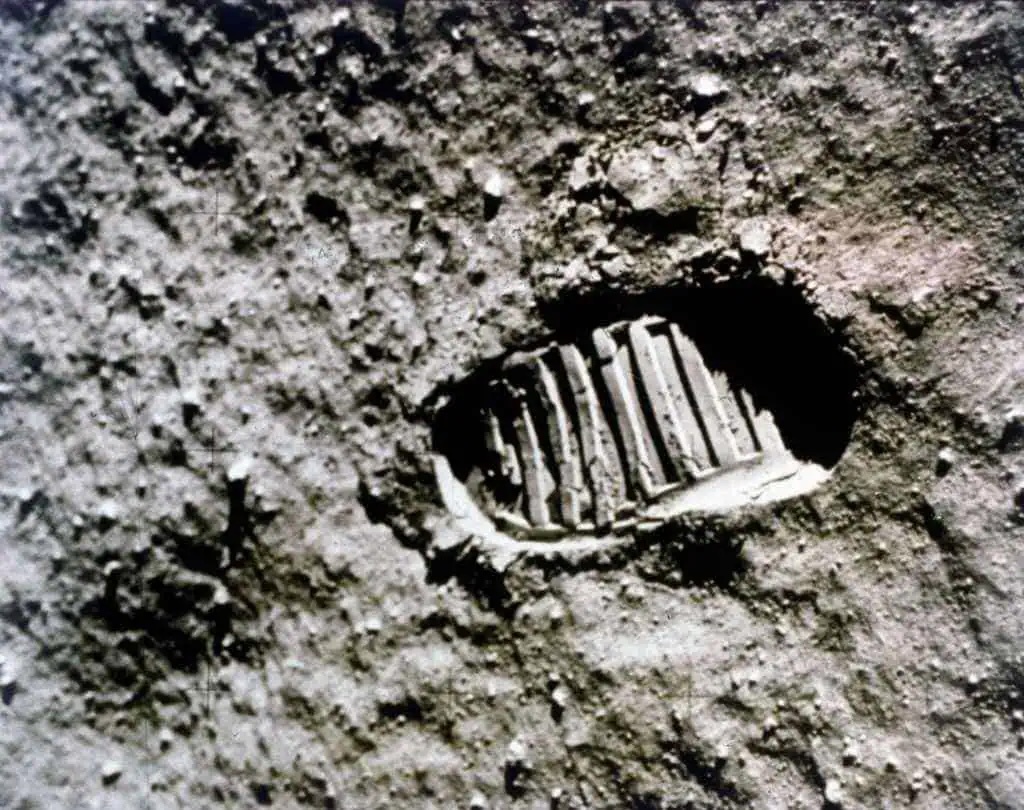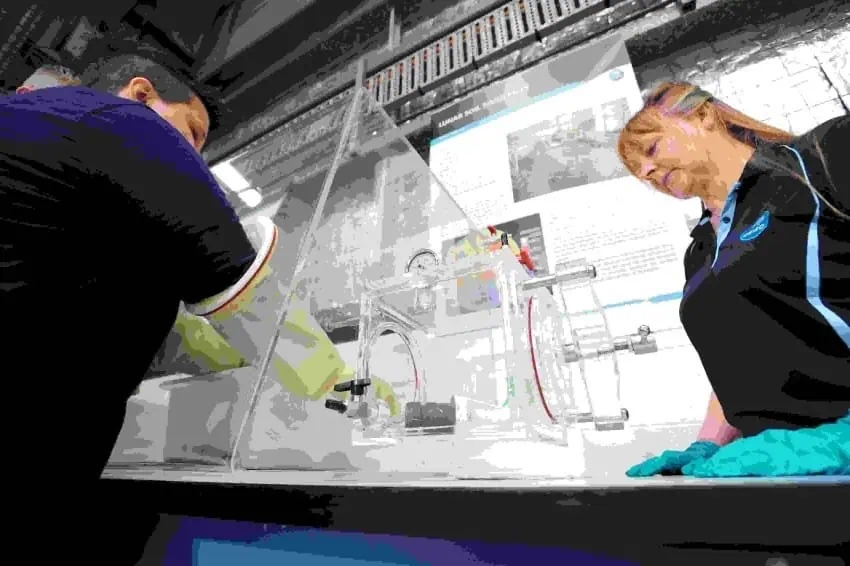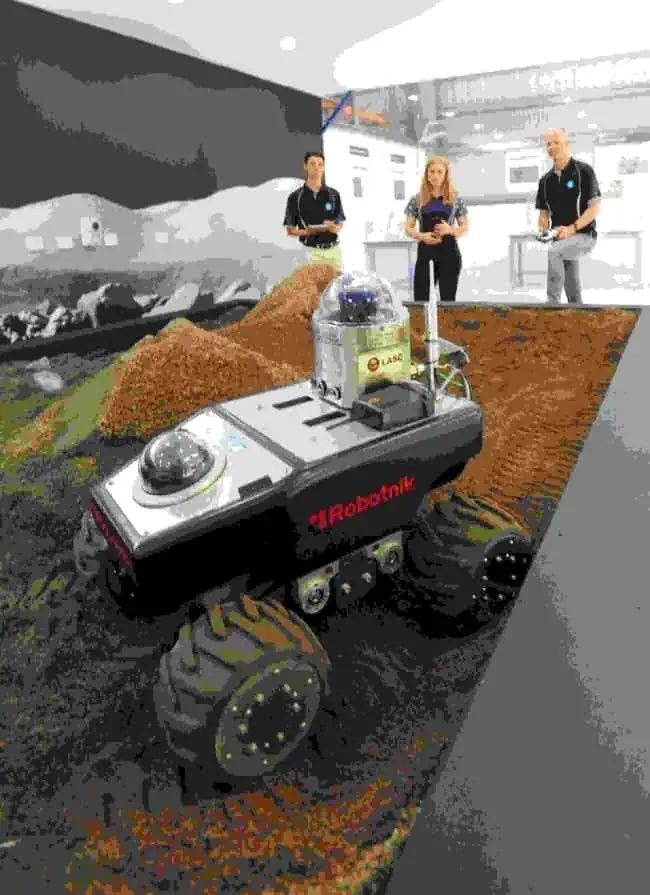18.06.2024

Boot-print of US astronaut Neil Armstrong, first man to set foot on the Moon, clearly visible in the lunar soil. (Photo by Heritage Space/Heritage Images/Getty Images)
A rare Moon mineral mostly associated with the first voyages to the lunar surface is subject to new research by Australia’s national science agency, the CSIRO.
Armalcolite, found in the Moon’s regolith, is named after the three astronauts on the first mission to land men on the moon – Neil Armstrong, Buzz Aldrin, and Michael Collins.
The soil sample was collected from the Sea of Tranquillity on the Moon during the Apollo 11 Mission in 1969.
Rich in magnesium and iron, armalcolite is an opaque, bluish-grey titanium dioxide mineral. It is found in basalt rocks, some granites, lamproites, and kimberlites. It forms small, elongated crystals embedded in its matrix, the substance surrounding the crystals.

Jane Hodgkinson at ISRU
Despite coming from sources deep under the surface, the crystals are believed to have formed at low pressure and high temperatures but cooled very quickly.
Armalcolite has been found on Earth in just a handful of places, including Greenland, Germany, the USA and Western Australia (WA).
Geologist and CSIRO’s Principal Research Scientist, Dr Jane Hodgkinson, says it is likely the mineral had not been noticed on Earth before, as it is so rare and small.
“Every speck and grain from the original lunar samples were examined closely by NASA. The lunar sampling process taught us what to look for on Earth,” Hodgkinson says.
“The rarity of armalcolite means there are no obvious economic uses. However, it can withstand high temperatures and moderate abrasion. This together with its titanium content could make it useful, if we could find it in higher concentrations.
“Research into its use as a catalyst, in semiconductors, or electronic applications might yield interesting results, but even so, finding more of the mineral is a challenge,” she says.
“What we can take away is that its presence tells us about the chemical and physical process and conditions that may have occurred during its formation.

ISRU test bed (CSIRO)
“Its presence on the Moon, for example, supports our understanding of early conditions, such as the lack of oxygen and other oxidizing gases when the mineral formed.”
Hodgkinson works at the CSIRO In-situ Resource Utilisation (ISRU) facility, which includes a lunar testbed that simulates some of the physical characteristics of the Moon’s surface, such as lunar dust and provides a realistic testing ground for rovers and other equipment.
“As a geologist, with space interests so close to heart, the Moon is always on my radar.”
The ISRU helps space researchers develop tools to find resources in space that can support future space missions.
The facility is used by miners, automation and AI specialists. It includes a robotics playground for testing autonomous equipment and drones in different terrains. The ISRU facility offers expertise in mineral sensing, sorting, and processing, mineral characterisation labs and specialised manufacturing facilities.
“We are developing technology for sensing, sifting and sorting regolith, which we hope will detect armalcolite,” says Hodgkinson.
“We now have an astrometallurgy expert on our team, and with enough armalcolite and similar minerals such as ilmenite, we might be able to produce metal and oxygen – two critical elements for supporting extended stays on the Moon.”
The ISRU facility includes:
- A mission control room for remotely monitoring and managing rovers, payloads and related equipment. The control room supports augmented and virtual reality mission demonstrations, ConOp development and evaluation, and STEM engagement opportunities.
- High-quality lunar mare and highland regolith simulants in quantities that allows for realistic, large scale, long-term testing and evaluation.
- A sealed dust area provides a planetary analogue for the evaluation of ISRU payloads, regolith extraction and manipulation concepts, and mechanical and robotic mobility platforms in a controlled and safe environment. The area also includes advanced tracking capabilities and a spatial projection system to overlay extended reality visualisations.
- Dedicated evaluation areas for conducting controlled and systematic assessment of components, subsystems and systems, drawing upon CSIRO exploration and mining R&D expertise, instrumentation and infrastructure.
- Integration and access to other ISRU facilities and equipment on site including the remote management centre, resource processing systems, navigation lab, the robotics innovation centre and a remote testing range.
